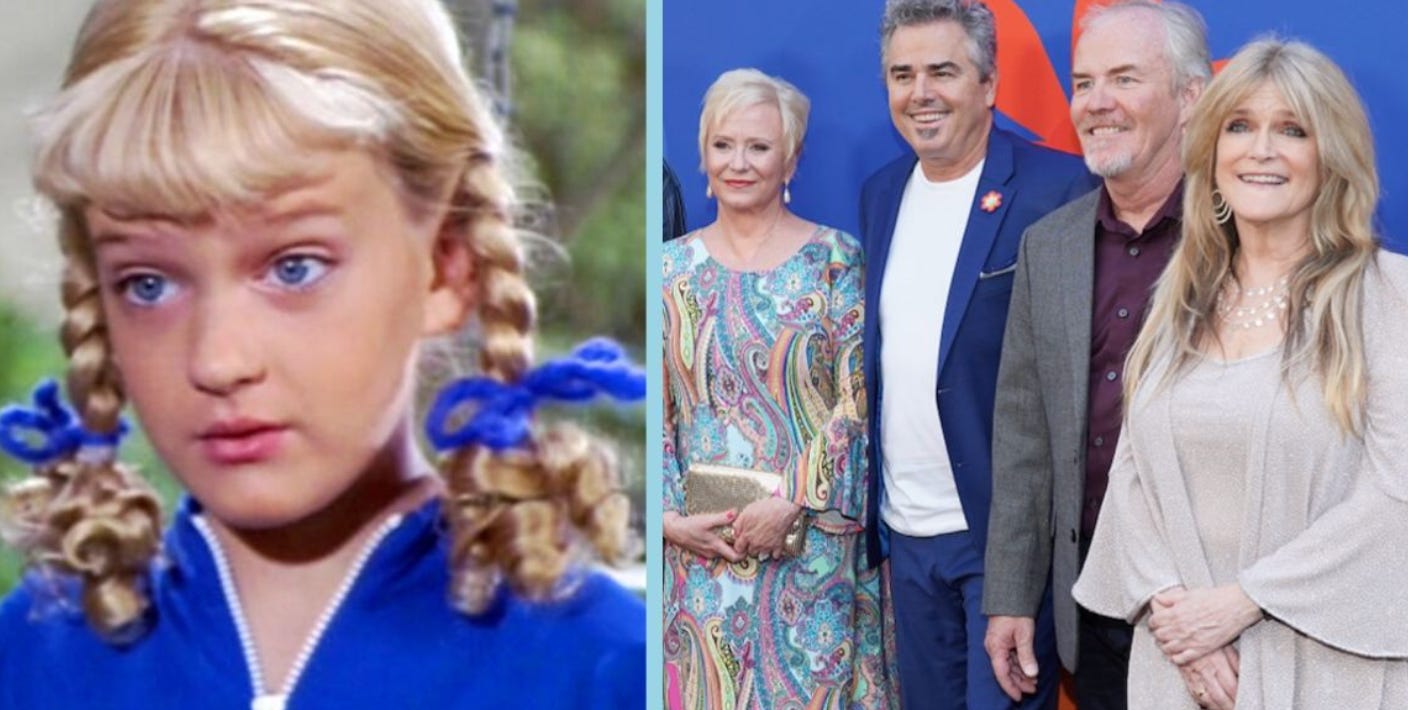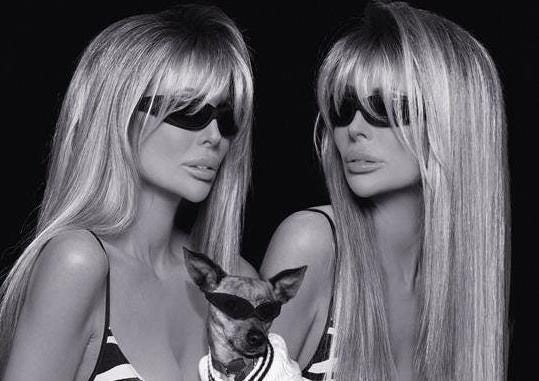The Brady Bunch to the Rescue
Interview with Animal Advocate Susan Olsen (Cindy Brady)
By Jordan Schaul | National Geographic | November 11, 2012
Contributing Editor Dr. Jordan Schaul invited the legendary animal rescuers, the Barbi Twins, to interview another celebrity animal advocate and rescuer. Here is an interview with Susan Olsen who played Cindy Brady on the Brady Bunch.
Barbi Twins: We noticed on the Brady Bunch that Cindy Brady, as a young girl, wanted to adopt a dog on your show. Was that your idea and have you always been interested in helping animals?
Susan: The Bradys were a blended family. The boys had a dog already and the girls had a cat who was last seen in the first episode being chased by the dog. He must have gotten her because she was never seen or mentioned again. After Tiger, the dog mysteriously disappeared, he was never mentioned either and I don’t think Cindy ever mentioned wanting anything but a horse. The Bradys were terrible pet owners.
Barbi Twins: What animal organizations do you support and how do you support them?
Susan: I support Precious Paws and I have been on their board of directors since 2008. I am also a foster parent for them, I am very involved with this group. Precious Paws is a small mom-and-pop group located in the Los Angeles area of California and we are a hands-on rescue. We foster from our homes, we do pet adoptions on the weekends at our local Petco, we do TNR of cats, we help the public as best we can with advice, and financially when funds are available, we do the best we can to serve the local community with our little grassroots group.
I will be helping Petopia launch their first all rescue pet store in the Woodland Hills Promenade this month. My art will be available in their store for their first month and a portion of the proceeds will go directly to them. But normally a portion of the proceeds of my artwork goes exclusively to Precious Paws. My Rescue art can be seen at https://www.facebook.com/TheArtOfRescueBySusanOlsen?fref=ts
Barbi Twins: We helped with Hurricane Sandy pets, but so many are lost or being killed at shelters. What can we learn from Hurricane Sandy when it comes to animals and disasters?
Susan: Each home needs to Be PREPARED! Have as many carriers as you have pets, for both dogs and cats. Make sure you have pictures of each pet, all medical records at hand, that they are microchipped, have on collars and tags in case they get separated from you. Have a week’s worth of pet food, litter, water and supplies stored also.
We also need governments to be aware that pets are family members. During Hurricane Katrina, the city officials would not let people take their pets and made them leave them behind to die and this is not acceptable, it is inhumane and shows how the general populous does not put any value on an animal’s life. Dogs and cats are viewed as disposable to most, if not, there would not be a few million killed in shelters across the U.S. every year.
Every city needs to make sure that there is a disaster plan for pets in case of disaster and no pet should be left behind. All pets should be microchipped to ensure they will be reconnected with their owners and are not killed in the shelter. The city needs to work with local shelters to devise a disaster plan to make sure they can help connect lost pets with their owners instead of killing them within the normal time each shelter is allotted to house an animal.
Barbi Twins: Have you been influential in recruiting the rest of the Brady Bunch gang to get into animal rescue or any of your own family members? At what point did you become an animal advocate?
Susan: We all are animal lovers. Chris, Barry, Mike, and Robbie have done appearances with me to help Precious Paws. Chris Knight (Peter Brady) introduced me to Georgyne LaLone the Founder/President of Precious Paws. Georgyne worked with Chris in the late ’80s when they both worked for Eliza Roberts (Eric Robert’s wife) for Eliza’s Casting Agency. I had already become part of the bottle baby program with my local shelter and Chris suggested that I get to know Georgyne and the rest is history.
I grew up with animals. My Dad loved wildlife and my Mom loved pets. My Dad was the kind of guy who might find a baby animal in need, bring them home, and call the zoo and various experts on how best to care for and rehabilitate the animal. My first bottle baby was a squirrel. We had a pair of desert tortoises who laid eggs every year (never hatched) I even had a possum. We lived in a kind of rural suburb and animals were always part of that. I think I was born with an Ellie May Clampett gene but it was encouraged. Respecting other species was just how we lived!
Barbi Twins: Can you explain how you are hands-on with animal rescue? Can you explain TNR and why you think it’s important to the feral cat community and the no-kill movement?
Susan: I started as a bottle baby rescuer, taking under-aged animals and weaning them until they were big enough to be adopted. That is really fun but you realize it’s putting a band-aid on cancer, the key is to stop all of these homeless babies from being born. The important job is trapping, spaying/neutering, and re-releasing the cats back to the colonies. People think that the only way to control the population is to trap and destroy the strays. That’s not true, TNR is as effective and a feral colony of cats cuts down on rodents and keeps other cats from coming into the area.
Barbi Twins: What message would you like to pass on to your fans about animal rescue?
Susan: Spay and neuter! If your furniture is more important than an animal – don’t get one! NEVER take a pet away from a child because “it just isn’t working out” That is a child’s first sense of commitment and relationship. The only circumstance where a pet should be removed is if the pet becomes a danger to other family members. Otherwise, you are teaching your children that relationships are disposable. I’m not buying the allergy excuse either. I hate that episode of the Brady Bunch where they are getting rid of the dog because Jan is sneezing. Unless the allergies are life-threatening, we have medication for these things. Allergic people should avoid what they may be allergic to but NEVER should a family pet be removed from the home. (I’m pretty militant about that!) And don’t you DARE teach your kids the beauty of birth by letting your pet get pregnant! The shelters are full of abandoned pregnant pets and pet mothers with litters and they are being killed daily, no one is exempt from being killed cause they are kittens or puppies, they die too. THAT is a good lesson for kids: taking on the responsibility that other people failed at. Being irresponsible enough to let your pet get knocked up is teaching your kids to be just as irresponsible. I believe pets are invaluable for teaching children empathy which can cut down on cases of bullying better than anything. But unless you plan to teach them respect for that other life, you do more harm than good.
The Barbi Twins Huffington Post Bio
ABOUT NATIONAL GEOGRAPHIC SOCIETY
The National Geographic Society is a global nonprofit organization that uses the power of science, exploration, education and storytelling to illuminate and protect the wonder of our world. Since 1888, National Geographic has pushed the boundaries of exploration, investing in bold people and transformative ideas, providing more than 14,000 grants for work across all seven continents, reaching 3 million students each year through education offerings, and engaging audiences around the globe through signature experiences, stories and content. To learn more, visit www.nationalgeographic.org or follow us on Instagram, Twitter and Facebook.
MEET THE AUTHOR
With training in wildlife ecology, conservation medicine, and comparative psychology, Dr. Schaul's contributions to Nat Geo Voices have covered a range of environmental and social topics. He draws particular attention to the plight of imperiled species highlighting issues at the juncture or nexus of sorta situ wildlife conservation and applied animal welfare. Sorta situ conservation practices are comprised of scientific management and stewardship of animal populations ex situ (in captivity / 'in human care') and in situ (free-ranging / 'in nature'). He also has a background in behavior management and training of companion animals and captive wildlife, as well as conservation marketing and digital publicity. Jordan has shared interviews with colleagues and public figures, as well as editorial news content. In addition, he has posted narratives describing his own work, which include the following examples: • Restoration of wood bison to the Interior of Alaska (As Animal Curator at Alaska Wildlife Conservation Center and courtesy professor at the University of Alaska) • Rehabilitation of orphaned sloth bears exploited for tourists in South Asia (As executive consultant 'in-residence' at the Agra Bear Rescue Center managed by Wildlife SOS) • Censusing small wild cat (e.g. ocelot and margay) populations in the montane cloud forests of Costa Rica for popular publications with 'The Cat Whisperer' Mieshelle Nagelschneider • Evaluating the impact of ecotourism on marine mammal population stability and welfare off the coast of Mexico's Sea of Cortez (With Boston University's marine science program) Jordan was a director on boards of non-profit wildlife conservation organizations serving nations in Africa, North and South America and Southeast Asia. He is also a consultant to a human-wildlife conflict mitigation organization in the Pacific Northwest. Following animal curatorships in Alaska and California, he served as a charter board member of a zoo advocacy and outreach organization and later as its executive director. Jordan was a member of the Communication and Education Commission of the International Union for the Conservation of Nature (CEC-IUCN) and the Bear Specialist Group of the IUCN Species Survival Commission (BSG-SSC-IUCN). He has served on the advisory council of the National Wildlife Humane Society and in service to the Bear Taxon Advisory Group of the Association of Zoos and Aquariums (AZA Bear TAG). In addition, he was an ex officio member of the council of the International Association for Bear Research and Management.




